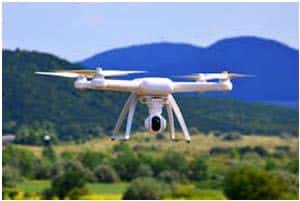Investigators need to reveal evidence and discover why and how a crash occurred, particularly when personal injury, death, or property damage is involved.
Blocked or shut down roadways are an inconvenience for both drivers and officials, but on-scene road traffic crash reconstruction is a necessary requirement.

Crashes need to be mapped for reconstruction
Distracted drivers who fail to yield to the slowed down or stopped traffic provide the perfect breeding ground for secondary crashes. This public safety issue is one of the biggest concerns for officials when investigating and reconstructing a traffic crash.
These secondary crashes are the reason many investigators and officers feel rushed to collect evidence and clear a scene quickly, but conventional mapping of a fatal crash can take several hours depending on the severity of the scene.
“Road safety is an issue that does not receive anywhere near the attention it deserves – and it really is one of our great opportunities to save lives around the world,” Michael Bloomberg, WHO Global Ambassador for Noncommunicable Disease and Injuries. The Global Status Report on Road Safety of 2018 states that road traffic accidents claim more than 1.35 million lives each year: globally.
That’s 3,750 lives each day. Furthermore, road traffic crashes are now the leading cause of death for individuals between the ages of 5 and 29 years old.
Like a growing number of police agencies across the United States, drones and lasers are transforming the way investigators collect data of crash scenes. With the constant imminent risk of secondary crashes, the addition of a drone to help document crash scenes reduces the risk of secondary crashes by a factor of 24. Lasers are used to measure key ground measurements that can be overlaid with aerial photos and point data to ensure accuracy.

Drones and Lasers speed up Crash mapping processes
Lieutenant Robert Hainje of the Tippecanoe County Sheriff’s Department explains that “With the UAV technology, we can shoot a scene, for example an 800-foot scene that we recently had, we shot that entire scene in a matter of 22 minutes” (AUVSI NEWS).
Remote pilots send up their drones taking high-resolution images that are transmitted into a computer and run through a software program that creates highly detailed and accurate 3D diagrams. Reducing the time investigators and officers spend on scene, creating a safer roadway for all.
The drone phenomenon isn’t going to quiet down anytime soon. According to a 2017 report by Freedonia group, drone spending by county and municipal government spending for drones, mostly within police, fire, and rescue agencies, is estimated to reach $80 million by 2025.
In addition, the use of drones for emergency services rose by 82% in 2018! (Drone Center, Bard College) Drones are an exciting piece of tech that have many life-saving benefits for emergency services.
But before you go out and purchase a UAV for your department, there are many steps that need to be taken before operating your drone. From aircraft and location requirements, local laws and regulations, to certifications, registrations, and FAA laws and regulations, it can become discouraging for any new drone user. Our Drone Mapping Webinar can help you learn the best practices for this evolving method that improves crash scene mapping.
Contact us today for more information on our mapping products and solutions, or to schedule a practical demonstration.
Contact Us